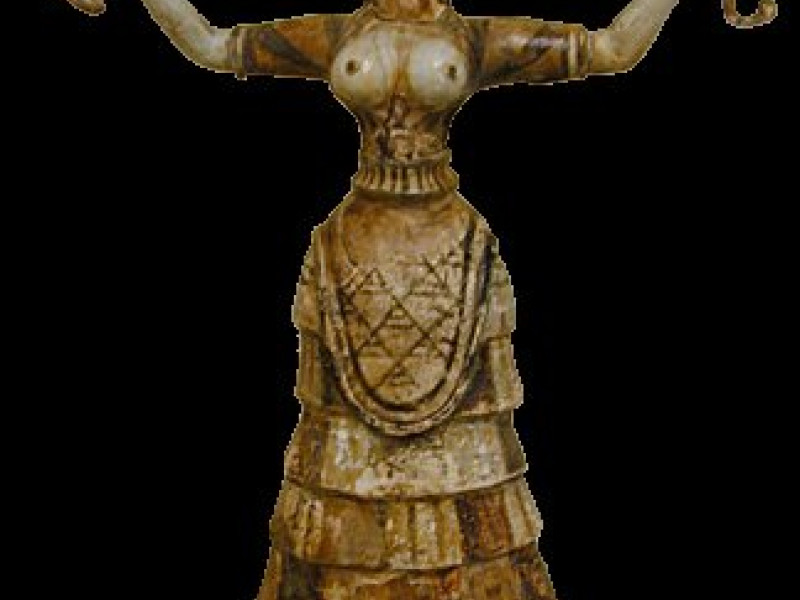The Mistress (Potnia)
PO-TI-NI-JA or Potnia seems more of a title than a name. Potnia means either "Mistress" or "Lady". Potnia was a mother goddess or goddess of nature.
There were many epithets to the name of Potnia which indicated that either there was one goddess with many epithets or there were a number of different goddesses. Since there are no reliable sources during the Bronze Age, much of what we know about the various Potnias is mere speculation.
In the Linear B inscriptions found in Knossos and Pylos, we have found that the name Potnia appeared several times, but with different attributes or epithets.
On the Linear B tablets in Knossos, Crete, there were the following Mistresses:
PO-TI-NI-JA | Potnia | "Mistress" or "Lady" |
A-TA-NA PO-TI-NI-JA | Atana Potnia |
|
DA-PU-RI-TO-JO PO-TI-NI-JA | Dapurito Potnia | "Lady of the Labyrinth" |
A-SI-WI-JA | Aswia | Potnia Aswia |
Below, are the following Potnias, found in the Linear B tablets in Pylos:
PO-TI-NI-JA | Potnia | "Mistress" or "Lady" |
PO-TI-NI-JA I-QE-JA | Potnia Hikkweia or Potnia Hippeia | "Mistress of Horses" |
PA-KI-JA-NI-JA | Sphagianeia? | place name |
A-SI-WI-JA | Aswia | Potnia Aswia |
NE-WO-PE-O | ? | place name |
U-PO-JO | ? |
(A full list of Minoan and Mycenaean names from the Linear B tablets can be found in The Greek World, Linear B (Facts and Figures).)
Two pa-ki-ja-ni-ja (Sphagianeia) and ne-wo-pe-o are not epithets; these are place names.
As you would notice from two lists of names above, there is no mention of Potnia theron, "Mistress of Animals". This is because Potnia theron is a modern name to describe the Aegean goddesses with animals who frequently appeared in Minoan and Mycenaean art.
There is one goddess whose name appeared in the tablets in Pylos, who doesn't have the name Potnia – Mater theia (MA-TE-RE TE-I-JA). MA-TE-RE TE-I-JA or Mater theia literally means "divine mother" – a mother goddess.
There are two Potnias for which I would like to go into more detail: Atana Potnia and Potnia theron.
Related Information
Name
PO-TI-NI-JA or Potnia – "Mistress" or "Lady".
A-TA-NA PO-TI-NI-JA or Atana Potnia (= Athena?).
Potnia theron – "Mistress of Animals" (= Artemis?).
DA-PU-RI-TO-JO PO-TI-NI-JA – "Lady of the Labyrinth".
PO-TI-NI-JA I-QE-JA – "Mistress of Horses".
Related Articles
See also Atana Potnia and Potnia theron.
Snake Goddess, Artemis, Athena.
By Jimmy Joe





